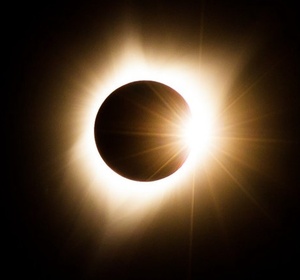NOAA’s weather model predicts clouds cover on eclipse day, how the solar eclipse will influence weather

NOAA’s High Resolution Rapid Refresh (HRRR), model developed at GSL, predicts way more than temperature, wind, and precipitation. GSL researchers are working on forecasts of hourly wildfire potential, skin temperature, storm runoff, windspeed at wind turbine heights, and dozens of other parameters. But the HRRR is also eclipse-ready. The HRRR predicts incoming solar radiation, and this visualization shows how much sunlight will get to Earth during the eclipse on April 8, 2024!
The eclipse module computes how much the moon obscures the sun at each model grid point. Based on this calculation, the model modifies the incoming solar radiation, which impacts the heating of the Earth, and subsequently, the weather!
This is a video visualization of the eclipses that will occur in the next four decades (image below). Red represents the total eclipse paths, and blue represents the annular eclipse paths. The next time the U.S. will see a total solar eclipse is not until August, 2045.
Learn more about eclipses from NOAA’s Science On a Sphere®.
%20small.jpg)
